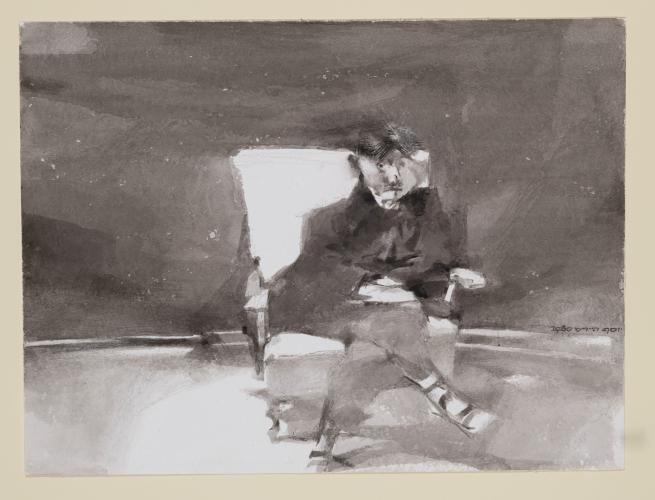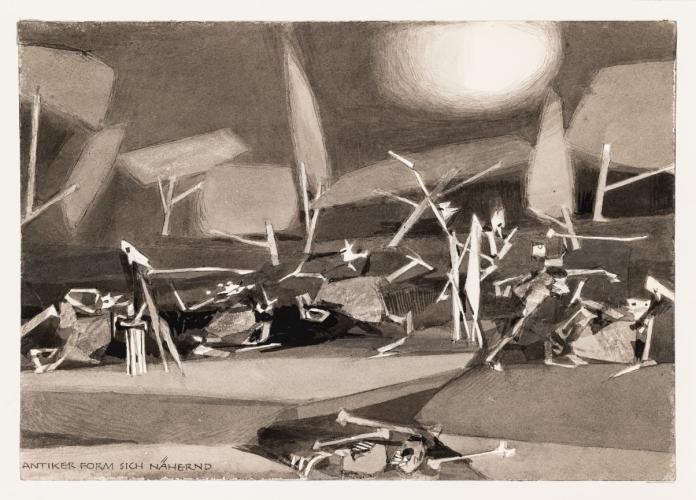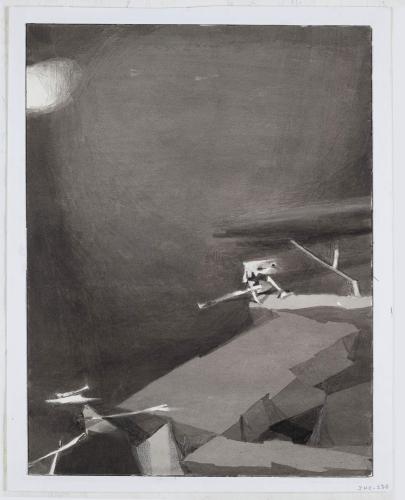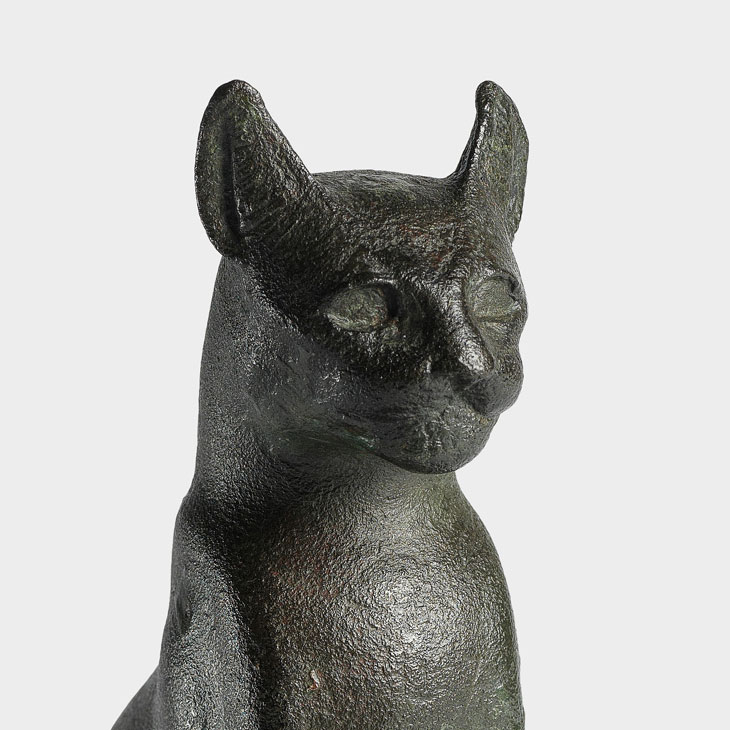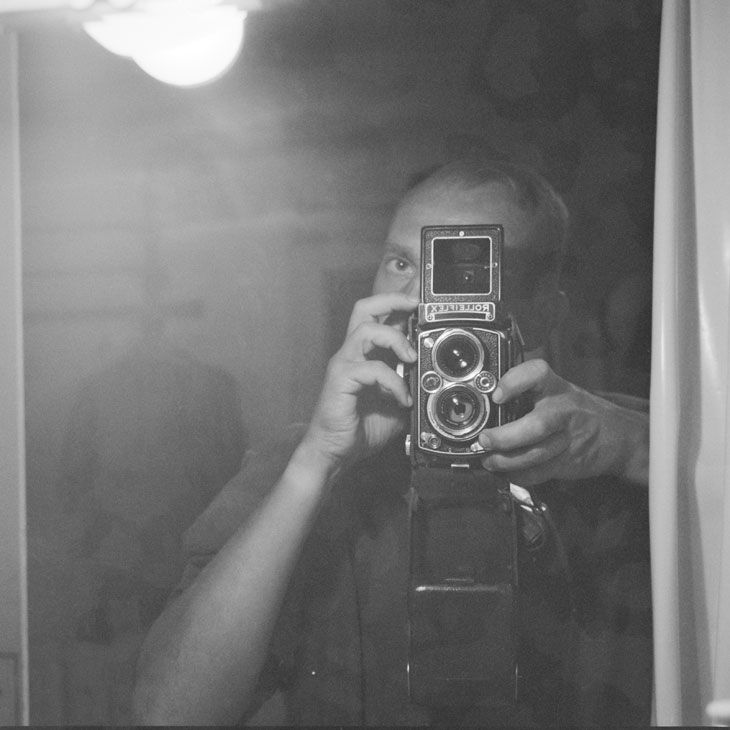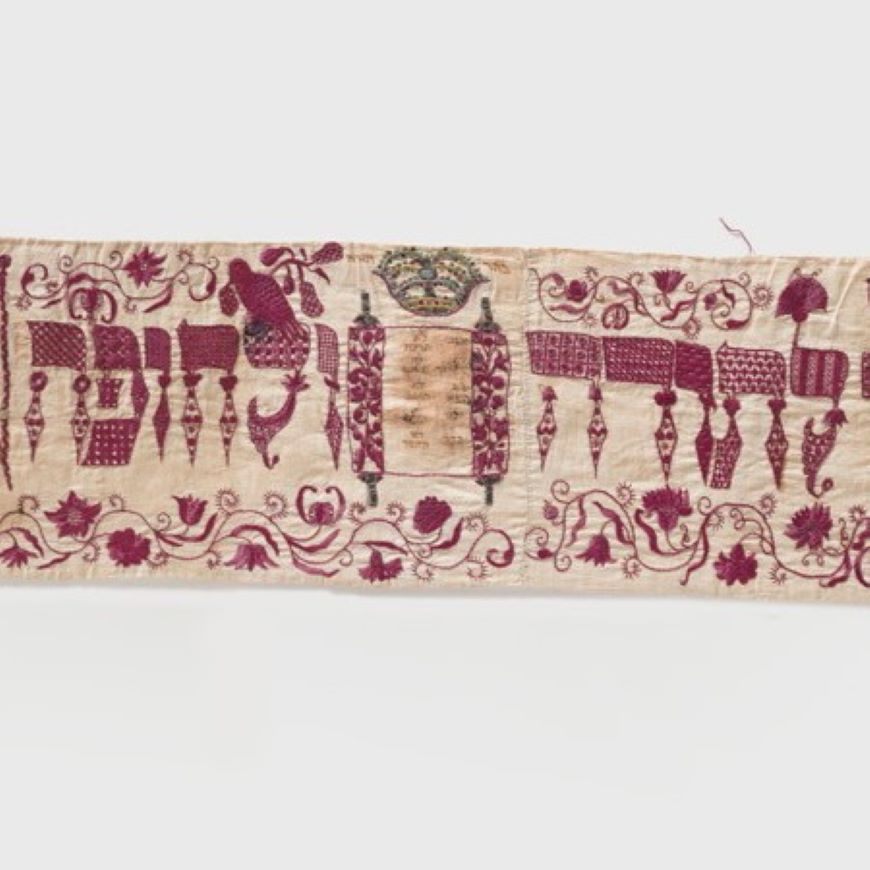
Joseph Hirsch: The Poetry of Sight
-
December 26 2024 - April 19 2025
Curators: Ronit Sorek, Avishay Ayal
Assistant curator: Loti GomboshDesigner: Yasmin Tams
-
Hagit Gallery, Edmond and Lily Safra Fine Arts Wing
- Artist: Joseph Hirsch
"Work from the general to the specific and from light to dark, avoid symmetry, and connect figure and background" – these are just some of the principles passed down by artist-draftsman Joseph Hirsch (1920–1997) to his students at the Bezalel School of Art. Hirsch, the youngest member of the German-Austrian school of drawing active in Israel, devoted his career to figurative drawing, despite finding himself in a minority position with the rise of conceptual and abstract art. The major theme of his poetic, and at times ironic art is humanity itself – man’s loneliness and alienation, his pathetic attempts to forge connections with others, and his forlorn efforts to understand his own fate.
Hirsch worked in ink on paper, in small-scale formats, focusing on portraiture and still-life. Within the clear boundaries he set himself, he created a visual language based on a methodical theory aiming to unite drawing from observation with emotional expression and geometric construction. He considered drawing an ongoing process that develops in stages, in which the sheet is comparable to a stage or platform on which an event unfolds. Among other things, he instructed his students to avoid repeating similar shapes or same-sized lines and to take note of secondary shapes in the background that echo central shapes in the foreground. His charismatic, humorous manner gained him an admiring and loyal following among generations of students.
Hirsch often portrayed figures seated in an armchair as if on a stage, many of them acquaintances, doing so with a gaze that penetrated body and soul. Despite his adherence to drawing from observation and his tendency to downplay the value of "made-up works," Hirsch's corpus always contained "drawings from memory." These works feature stylized figures, not entirely human, moving through shadowy spaces, seemingly performing a danse macabre or locked in eternal battle.
Exhibition and booklet made possible by the Hagit Lalo (née Shtriet) Memorial Fund, in honor of Avishai Yehonatan Freidman
Watch the film:
- Apr 14Apr 15Apr 16Apr 17
- Apr 14Apr 15Apr 16Apr 17
- Mar 20Mar 27Apr 03Apr 10Apr 14Apr 17Apr 24
- Mar 17Mar 20Mar 24Mar 27Mar 31Apr 03Apr 07Apr 10Apr 15Apr 16Apr 21Apr 24Apr 28
- Mar 06Mar 13Mar 20Mar 27Apr 03Apr 10Apr 17Apr 24
- Mar 06Mar 13Mar 20Mar 27Apr 03Apr 10Apr 17Apr 24
- Mar 06Mar 13Mar 20Mar 27Apr 03Apr 10Apr 17Apr 24
- Mar 01Mar 08Mar 15Mar 22Mar 29Apr 05Apr 19Apr 26
- Mar 21Mar 22Mar 28Mar 29Apr 05Apr 19Apr 26
- Mar 17Mar 20Mar 24Mar 27Mar 31Apr 03Apr 07Apr 10Apr 21Apr 24Apr 28
- Mar 17Mar 24Apr 07Apr 21Mar 31Apr 28
- Mar 24Mar 31Apr 07Apr 21Apr 28
- Mar 25Apr 01Apr 08Apr 22Apr 29
- Mar 18Mar 25Apr 01Apr 08Apr 22
- Mar 25Apr 01Apr 08Apr 22Apr 29
- Apr 22
- Apr 22
- Apr 22May 20Jun 19Jun 24
